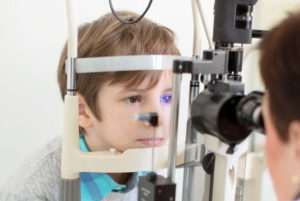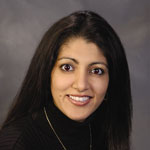Sponsored content
April 1, 2020
By Shalu Pal, OD, FAAO, FSLS, FBCLA

In preparation for treating myopia, optometrists study what causes the condition while also keeping up with the therapies that are most effective in managing it. Yet none of that knowledge will help children if we can’t find a way to pair our expertise with motivating parents to take action. Creating an effective care plan requires a personalized communication and clinical approach.
As ECPs, we have algorithms and protocols, and we hope that patients will fall nicely into these boxes and follow these flow charts. But people don’t fall into flow charts. We have to factor in the human side because myopia management is rarely straightforward. Determining who and when to treat can be the most straightforward task. Frequently we are treating a child while also having to teach a parent what needs to be done and explain the benefits of why you are making these recommendations. As much as we would like to plan out a protocol, a lot of myopia management depends on the child’s compliance.
We have to look at many factors when determining our approach. If we consider just the myopic children, we must study genetics, family history, ethnicity, and age. There are also lifestyle factors, such as the time spent outdoors, the foods they eat, and the amount of exercise they get. Clinically, we must look at the axial length of their eye, their current prescription as well as their change in prescription over the years.
Yet there are many other equally important factors to consider, such as the time required for the parent and child to attend appointments, the desire and motivation to commit to this process daily, and what is realistically possible for the family to do from a financial perspective. All this information is separate from clinical expertise.
Patient compliance is vital. Convincing someone to be compliant means you must make them understand what you are recommending, why it will be beneficial, and the long-term benefit for the patient. We need to understand someone’s willingness to comply and the level to which they will because that might change the plan we create for our patients. If you’re concerned that a patient might not come back for their follow up, then that may change your approach on the front end. To understand the motivations and compliance potential of your patients, you must have honest conversations with them so you can effectively plan your strategy.
I want our parents and patients to be successful, and working within their limitations, if present, will lend to better outcomes and more success. The goal is to educate our patients on the ideal process and the modifications we are doing to accommodate their needs and wants to create a protocol that achieves the desired outcome.
Sometimes, patients just want to please the doctor, and they might shy away from asking the questions they really want to ask. When I get a sense of that, I address it. But I may miss a cue from a patient of their hesitation.
To avoid any miscommunication, I rely on my staff. The staff in my practice fully understand the process of myopia management, and after I’ve spoken with a patient and their parent, I have both sit with one of my staff to review and allow for more questions to be answered. Patients often will be more comfortable speaking to my staff with their queries or having answers repeated that they might not have understood from me. If any changes in the plan need to be made or questions come up that the staff member is not sure of, I will be brought back into the conversation. Giving a patient time to talk with a staff member gives them, and us, a way to develop the best possible plan for treating their myopia.
Ultimately, you try to provide the best information and hope that you’ve done everything you can to explain the value and the purpose of what you’re doing, but it’s up to the parents and children to commit to the treatment process. We are there to support them and guide them the best we can.

Shalu Pal, OD, FAAO, FSLS, FBCLA, has a practice, Dr. Shalu Pal & Associates, in Toronto, Ontario.











